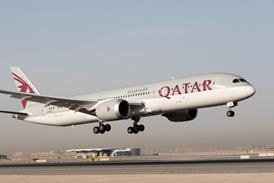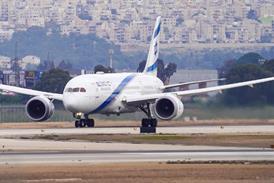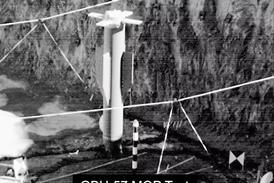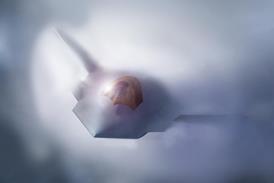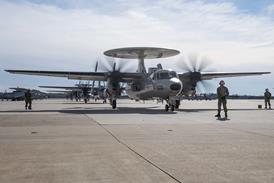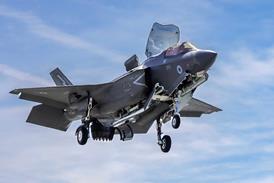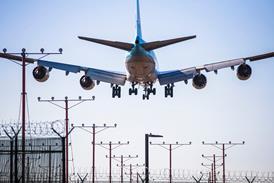The USA’s top defence official has given the clearest evidence yet that the Pentagon under the Trump Administration has soured on plans to acquire Boeing’s 737-based E-7 airborne early warning and control (AEW&C) platform.
Speaking before a congressional committee on 10 June, secretary of defense Pete Hegseth said observations of China’s military build-up and the now three-year-plus war in Ukraine are driving changes to the Pentagon’s equipment strategy.
“If we have systems and platforms that are not survivable in the modern battlefield, or they don’t give us an advantage in a future fight, we have to make the tough decisions right now,” Hegseth says. “The E-7 is an example of that.”
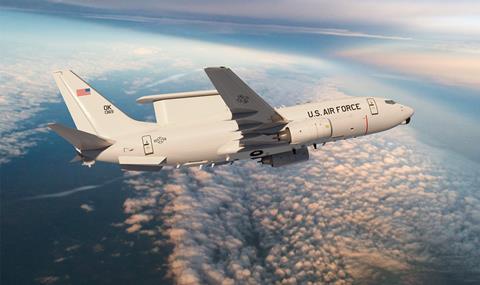
The US Air Force selected the E-7 Wedgetail in 2022 to replace its ageing fleet of Boeing E-3 Sentry AEW&C jets, with plans for a 26-aircraft fleet.
Some $2.6 billion has been committed to Boeing for the delivery of two prototype Wedgetails, with a production decision on a larger E-7 programme planned for fiscal year 2026.
While unverified reports in recent weeks had indicated that political appointees at the Pentagon were looking to axe the plan, Hegseth’s public remarks are the first clear indicator provided by a senior official.
While the defence chief did not rule out an E-7 acquisition, he expressed scepticism about the future survivability and utility of aerial intelligence, surveillance and reconnaissance (ISR) platforms.
“We believe most of the ISR, or a great deal of the ISR in the future, will be space-based,” Hegseth says.
“We’re willing to continue to review things like the E-7, but from our view, investments in existing systems that carry forward that capability, alongside even bigger investments in space-based ISR gives us the kind of advantages we need on a future battlefield,” he adds.
The AEW&C mission differs significantly from the tasks normally associated with the umbrella of ISR.
Rather than collecting imagery, monitoring communications and providing strategic-level monitoring of enemy troop movements, AEW&C provides tactical-level support to combat aircraft. Platforms like the E-3, E-7 and Russia’s Beriev A-50 use powerful dorsal-mounted radars to identify enemy aircraft formations at long range and direct combat fighters to engage.
The much larger radars featured on AEW&C aircraft allow fighters to target opponents at much greater ranges than their own internal fire-control radars allow.
However, the strategically important jets are vulnerable to enemy targeting – as Russia recently experienced at the hands of Ukrainian intelligence operatives. The slow-moving AEW&C aircraft also carry a large radar signature that makes them vulnerable to attack.
Despite that vulnerability, replicating the critical function with a space-based system currently represents an unproven concept.
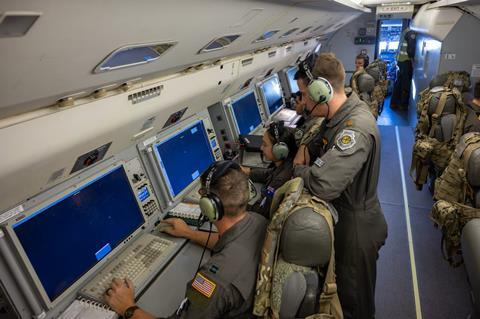
Hegseth’s comments about investing in existing systems would seem to indicate the Pentagon is considering an E-3 modernisation, while it explores options to replace the capability with space-based alternatives.
At least one member of Congress was sceptical of Hegseth’s position.
Tom Cole, who chairs the powerful House appropriations committee that oversees spending decisions, also happens to represent the region of Oklahoma that includes Tinker AFB, where the USAF’s E-3 fleet is based.
“I’m very concerned about retiring legacy systems,” Cole said during the hearing.
The Oklahoma Republican noted the air force has retired 15 of its 31 E-3s since 2023, without any replacement coming online. Congress previously approved E-3 retirements only after the air force had moved to launch an E-7 development programme, which now appears at risk.
While the Pentagon is responsible for procurement decisions, Congress approves funding for those programmes. Lawmakers have often overridden the preferences of generals and civil secretaries, providing funds and issuing requirements to move forward on specific acquisition priorities.
Cole seems to indicate that Congress might take such a tack with the E-7.
“It’s not a new technology. Our friends in Australia use it.” he says. “It’s much superior to what we have.”
“Space is great, [but] it’s unknown, it’s undeveloped,” Cole adds. “And I would just urge you to look at this pretty carefully as you make the decision. We certainly will, as a committee.”
Boeing expects to deliver the two prototype E-7s already under contract in 2028.


